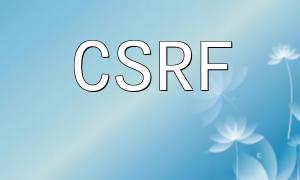Merging multiple CSS and JavaScript files into a single file significantly reduces HTTP request counts and boosts website loading speed. Below is an example of merging CSS files:
<?php
$css_files = ['style1.css', 'style2.css', 'style3.css'];
$combined_css = '';
<p>foreach ($css_files as $file) {<br>
$combined_css .= file_get_contents($file);<br>
}</p>
<p>file_put_contents('combined.css', $combined_css);<br>
?><br>
Using caching techniques can prevent repeated HTTP requests. If file contents do not change frequently, it’s recommended to cache the files locally and directly use cached versions when needed. Here is an example of caching files:
// Write to cache file
file_put_contents($cached_file, $html_content);
// Output HTML content
echo $html_content;
}
?>
By combining multiple small images into a single sprite image, you can reduce the number of HTTP requests. You can control which part of the sprite image to display using background-position in CSS. Here is an example of using sprite images:
.icon {
background: url(sprite.png) no-repeat;
width: 30px;
height: 30px;
}
<p>.icon-home {<br>
background-position: 0 0;<br>
}</p>
<p>.icon-play {<br>
background-position: -30px 0;<br>
}</p>
<p>.icon-setting {<br>
background-position: -60px 0;<br>
}<br>
Data URI converts images into Base64-encoded strings and directly embeds them into CSS or HTML, eliminating the need for HTTP requests. Here’s an example of using Data URI:
.icon {
background: url(data:image/png;base64,iVBORw0KG...) no-repeat;
width: 30px;
height: 30px;
}
Every redirect request adds an extra HTTP request, which can negatively impact website performance. Therefore, minimizing redirect requests is crucial for improving performance. Below is an example of reducing redirect requests:
<?php
$redirect_url = '';
<p>if (condition1) {<br>
$redirect_url = 'redirect1.php';<br>
} elseif (condition2) {<br>
$redirect_url = 'redirect2.php';<br>
}</p>
<p>if ($redirect_url) {<br>
header('Location: ' . $redirect_url);<br>
exit;<br>
}<br>
?><br>
By merging and caching files, using sprite images and data URIs, and reducing redirect requests, you can effectively decrease the number of HTTP requests, thereby improving the PHP website’s loading speed and performance. Developers should choose appropriate optimization methods based on specific requirements and combine them with other performance-enhancing strategies to elevate the website’s user experience and overall performance.










